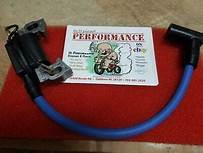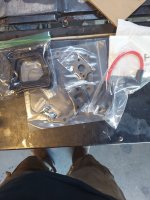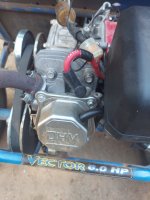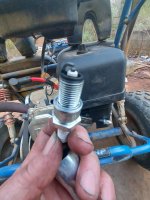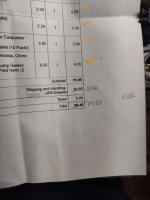In the off chance I'm overlooking the obvious...
I'm running a non resistor cap and spiral core Delco automotive HT lead, so do I even actually need a Dover ignition or is there some sort of embeded resistor array in the epoxy of the coil that retards the high rpm timing to prevent overrev?
I'll probably get one when I can. I've clocked rpm spikes as high as 5200 but mostly I'm bouncing a 4500 rev wall.
Probably shouldn't be running a BPR8HS plug either I suppose... I'll make sure to get non-resistor plugs.
It's something you have to check for yourself.
The dial back timing light I had, probably 10-15 yrs old, wouldn't work with these engines or my antique boat motors (1956-1959 johnson/evinrude). But worked on every auto/truck engine i put it on.
My buddys got 1, we estimated was made in the early 90s, can't read what brand it is or any other writing on it, worked on every thing we hooked it to.
We used a blower housing that was notched out to see the marks we made on the block and flywheel at 0*.
Start the engine, roll dial back to line the marks, thats the advance * btdc, start upping the rpm and you could clearing see the flywheel move away (retard) from the block mark.
Some stock coils started retarding at 4000, others around 4500, only 1 or 2 started at 4800.
Some would have a slow steady retard, while others would be a jerky 2-4* bounce.
Idk what the difference was, but they were different.
We tested with stock, arc and pvl flywheels, all stock coils from clones, preds, ducars, tillys pulled timing out. We didnt have an original honda coil to test.
Whatever dover does to his coils jus plainly works, acceleration is very noticeable by the butt dyno, and mph in the same distance.
I put this last 1 on the ducar 224, had it tuned to run 5400 rpm max (over geared for now), now its back up to 5700 jus from the coil change.
Gotta up the main a hair or 2 now, but in no hurry, gotta better carb coming for it anyways.
I'm sure you can test them with a regular timing light, jus get the marks lined up with whatever * you have it set at. Rev it up and watch it move,



Kinda sounds boring, but I like testing & tuning, sometimes its more fun then riding the trails.

